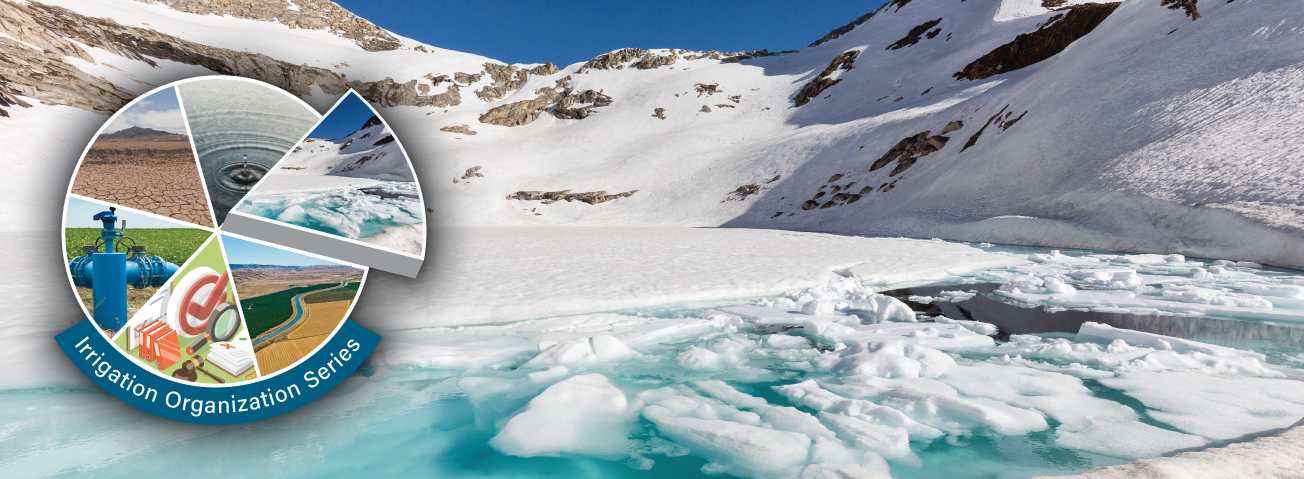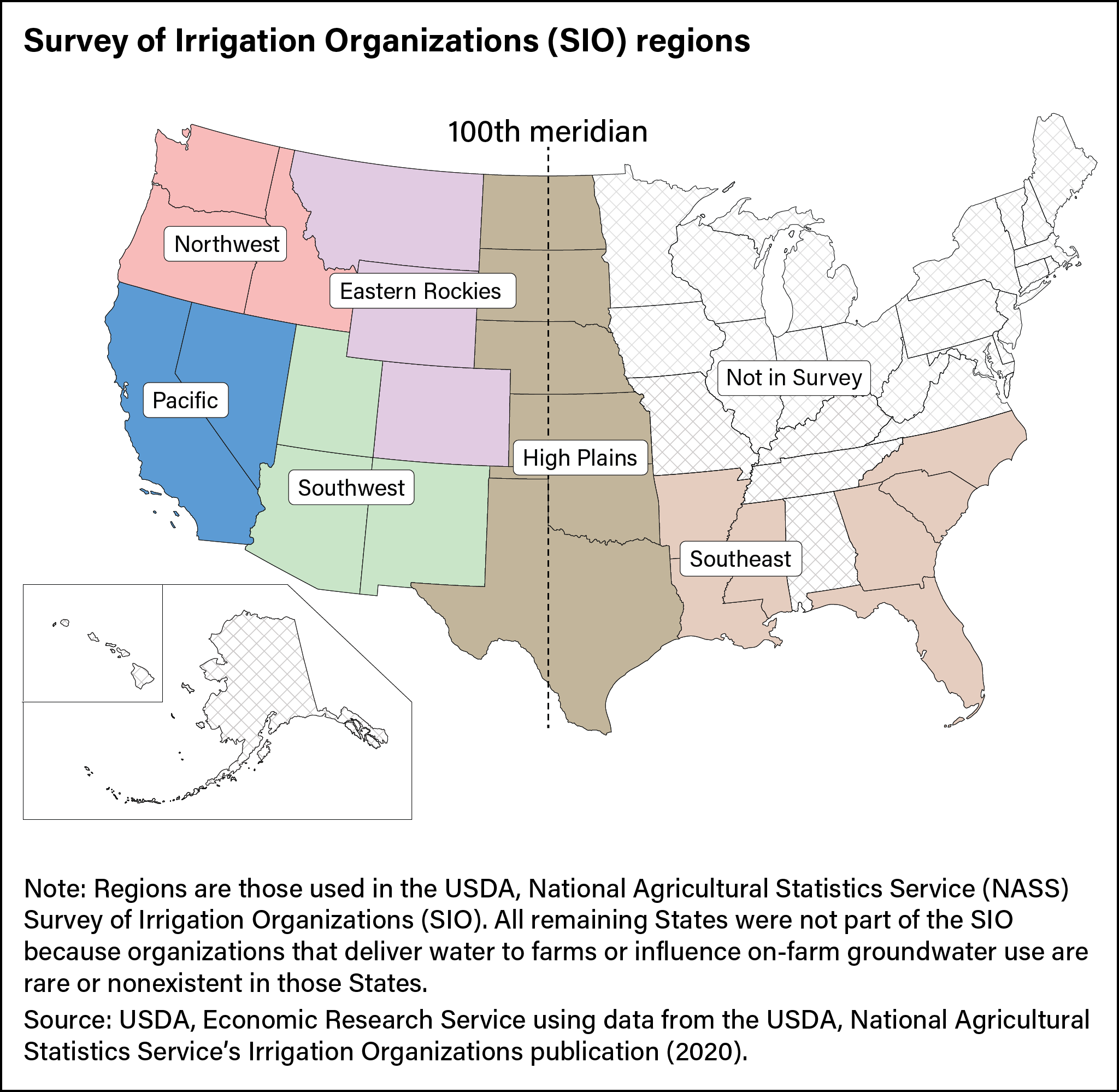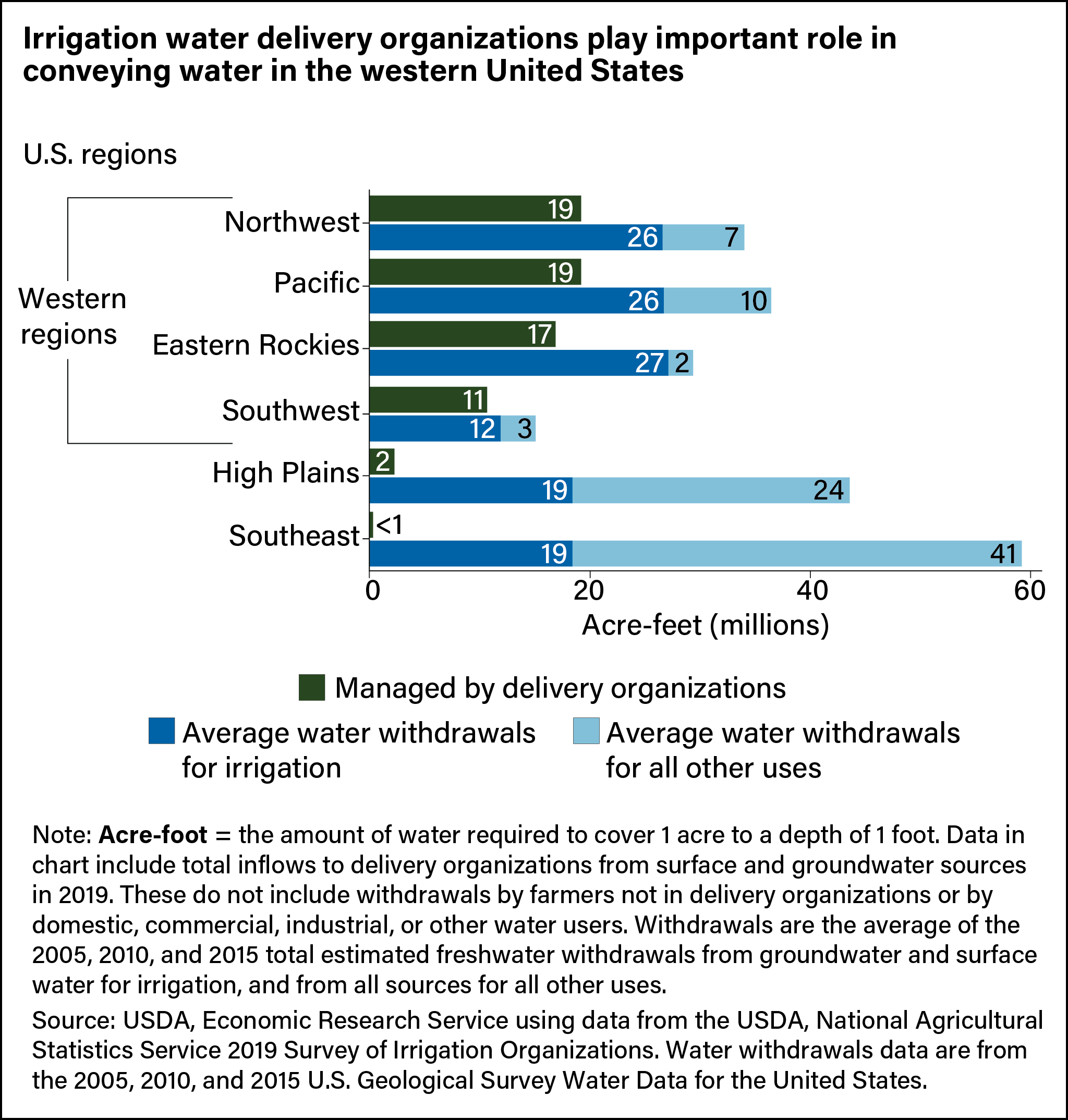
Water Delivery Organizations Convey Much of the Water Used for Irrigation in the Western United States
- by Nicholas Potter, R. Aaron Hrozencik and Steven Wallander
- 10/11/2023
Irrigation water delivery organizations arose in the late 19th and early 20th centuries to coordinate conveying water across arid farmland in the western United States. They range from small communal ditch organizations, private companies, and nonprofit organizations to large formal quasi-public institutions. Today these organizations play a major role in conveying water to farms, ranches, and other water users in the western United States. The role of these institutions is smaller in parts of the rest of the United States that have more precipitation or where most water is directly pumped from groundwater.
According to results from the USDA’s 2019 Survey of Irrigation Organizations (SIO), irrigation water delivery organizations in the western United States managed about 70 percent of water withdrawn for irrigation and almost 60 percent of water withdrawn for all agricultural, commercial, industrial, and municipal uses in an average year. Much of the surface water delivered by organizations in the western United States comes from water stored in snowpack. As warmer temperatures and variable precipitation reduce snowpack and alter the timing of spring runoff, irrigation water delivery organizations will continue to play an important role in water conservation in the western regions. In the central and southeastern United States, where rainfall is abundant and groundwater is more accessible, irrigation water delivery organizations account for less than 3 percent of water withdrawn for all uses in an average year.
The four western regions defined by the USDA’s National Agricultural Statistics Service consist of the Northwest (Idaho, Oregon, and Washington), Pacific (California and Nevada), Southwest (Arizona, New Mexico, and Utah), and Eastern Rockies (Colorado, Montana, and Wyoming). These regions contain mostly arid land west of the 100th meridian, the longitudinal line delineating the more arid western half of the United States. The High Plains (North Dakota, South Dakota, Nebraska, Kansas, Oklahoma, and Texas) and the Southeast (Arkansas, Louisiana, Mississippi, Georgia, North Carolina, South Carolina, and Florida) are to the east of the four western regions. The SIO survey did not include the remaining States because organizations that deliver water to farms or influence on-farm groundwater use are rare or nonexistent in those States.
Irrigation water delivery organizations are especially prominent in irrigated agriculture in the western United States because most of the country west of the 100th meridian receives less than 20 inches of precipitation a year, making coordinated irrigation infrastructure necessary for profitable agriculture where surface water or groundwater resources are not available. In contrast, much of the central and southeastern United States receives sufficient rainfall for dryland agricultural production. In those regions, the ownership of surface water follows the “riparian” doctrine that assigns water rights based on the ownership of land adjacent to streams and rivers. Where agriculture is irrigated east of the 100th meridian, greater groundwater availability and river access under riparian rights make substantial investment in conveyance infrastructure less beneficial.
The differences in the roles irrigation water delivery organizations play in the four western regions compared with the two eastern regions are striking in the context of water withdrawals by individuals and organizations for all uses. In the Southwest, which receives only a small amount of precipitation and where growers have relatively little access to groundwater, irrigation water delivery organizations account for more than 90 percent of water withdrawn for agriculture in an average year. In the Pacific and Northwest, where more groundwater is available and more precipitation falls in some areas, irrigation water delivery organizations in 2019 accounted for 73 percent of total withdrawals for agriculture in an average year. In contrast, most water withdrawn for irrigation in the High Plains comes from groundwater. Irrigation water delivery organizations in that region play a relatively minor role in providing water to farms and ranches, although they still manage most of the surface water used for irrigation. In the Southeast, irrigation water delivery organizations account for less than 5 percent of all water withdrawn for irrigation since abundant rainfall and available groundwater make coordinated investment in irrigation water conveyance infrastructure less important.
This article is drawn from:
- Potter, N., Hrozencik, R.A. & Wallander, S. (2023). Irrigation Organizations: Water Inflows and Outflows. U.S. Department of Agriculture, Economic Research Service. EB-36.
You may also like:
- Irrigation & Water Use. (n.d.). U.S. Department of Agriculture, Economic Research Service.
- Hrozencik, R.A., Gardner, G., Potter, N. & Wallander, S. (2023). Irrigation Organizations: Groundwater Management. U.S. Department of Agriculture, Economic Research Service. EB-34.
- Wallander, S., Hrozencik, R.A. & Aillery, M. (2022). Irrigation Organizations: Drought Planning and Response. U.S. Department of Agriculture, Economic Research Service. EB-33.
- Hrozencik, R.A., Wallander, S. & Aillery, M. (2021). Irrigation Organizations: Water Storage and Delivery Infrastructure. U.S. Department of Agriculture, Economic Research Service. EB-32.
- Hrozencik, R.A. & Aillery, M. (2021). Trends in U.S. Irrigated Agriculture: Increasing Resilience Under Water Supply Scarcity. U.S. Department of Agriculture, Economic Research Service. EIB-229.
- Marshall, E., Aillery, M., Malcolm, S. & Williams, R. (2015). Climate Change, Water Scarcity, and Adaptation in the U.S. Fieldcrop Sector. U.S. Department of Agriculture, Economic Research Service. ERR-201.
We’d welcome your feedback!
Would you be willing to answer a few quick questions about your experience?



